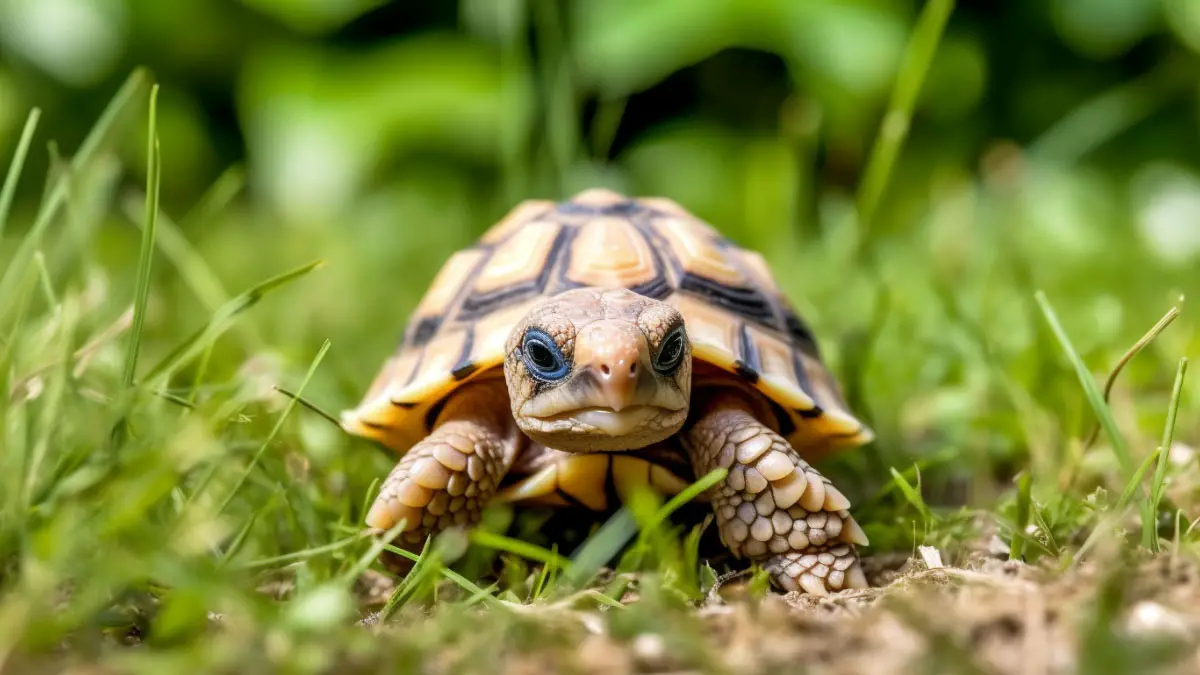The Ultimate Guide to Baby Sulcata Tortoise Care
It can be exciting and rewarding to welcome a baby Sulcata tortoise into your home. Although, as exciting as it might be, it is also quite challenging to take care of one since they require particular care.
So how do you take care of a baby Sulcata tortoise? To take care of a baby Sulcata tortoise, you need to provide a spacious enclosure, including indoor and outdoor areas. The enclosure must maintain a temperature of 85-95°F. It will also need to follow a balanced diet of leafy greens.
Moreover, they should be examined by a veterinarian every year to check if the tortoise is growing normally. Throughout this article, you’ll get to learn more about how to take care of them.
Environmental Needs for Baby Sulcata Tortoise Care
Contents
Providing a proper habitat for the baby Sulcata tortoise by controlling the temperature, lighting, and humidity is essential. For the sake of their general health and well-being, it is very important to maintain the proper conditions.
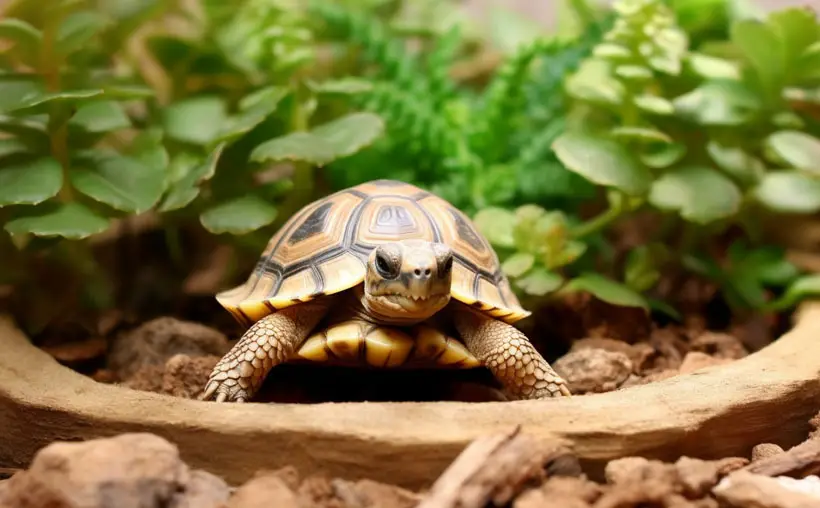
Moreover, a baby Sulcata tortoise will develop and thrive in a pleasant environment if the right conditions are maintained.
Enclosure
As said before, baby Sulcata tortoises need a spacious enclosure. A minimum enclosure size of 2ft by 3ft will do the job. Since these tortoises come in big sizes, they need to be able to roam freely. Additionally, they also need an indoor area for hiding. My research suggests that using hollowed-out wood logs would be a good idea.
Temperature
To help the tortoise efficiently manage its body temperature, make the enclosure’s temperature gradient. Maintain ambient temperatures at 85-95°F (29-35°C) during the day, lowering to 70-75°F (21-24°C) at night. Also, provide a basking area with temps about 95-100°F (35-38°C).
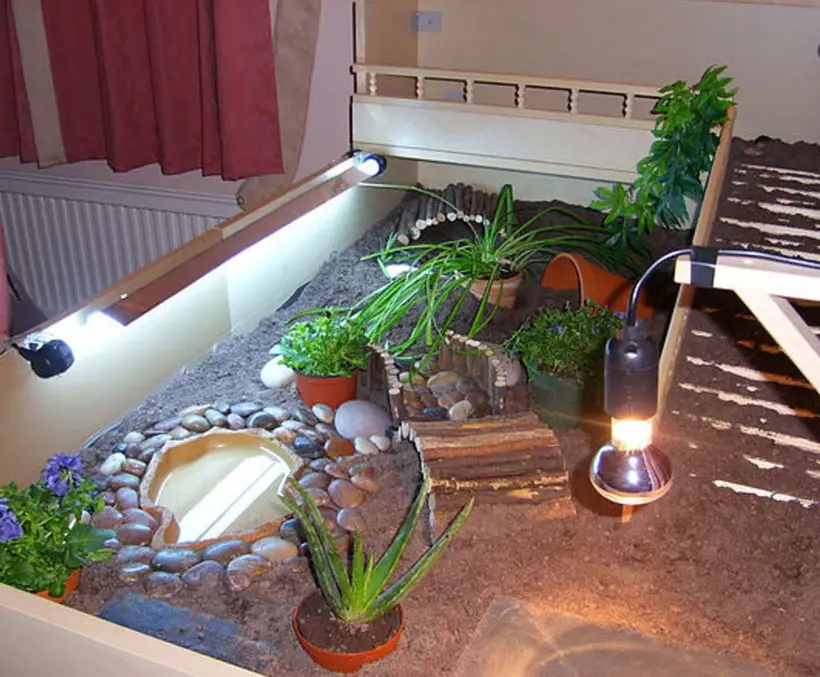
Lighting
Both UVB and UVA light sources must be accessible to Sulcata tortoises. Vitamin D3 is made possible by UVB sunshine and is essential for calcium absorption and shell health. Ensure exposure for 10–12 hours every day using a UVB lamp designed specifically for reptiles.
Humidity Control
Maintaining optimum humidity levels is necessary for your tortoise’s respiratory health and regular shedding. Aim for humidity levels of 50% to 60%. Additionally, create a space for the tortoise to manage its humidity requirements by providing a humid hide or moisture-retaining substrate.
Setting up a home for the tortoise might seem complicated. So to further demonstrate, below is a video that shows how to correctly set up an enclosure for a baby Sulcata tortoise.
Nutrition and Feeding Guidelines for Baby Sulcata Tortoise
Proper nutrition is essential for the growth and well-being of a baby Sulcata tortoise. A diet of leafy greens is essential as offering a variety of greens, including endive, kale, mustard greens, and dandelion greens, would be better. These greens provide vital vitamins, minerals, and fiber.
As an essential part of their food source, grasses are something you should introduce to the baby tortoise’s diet. Timothy hay and Bermuda grass are great choices. These fiber foods aid in healthy digestion and protect against conditions like constipation.
Calcium is essential for the healthy development of the Sulcata tortoise’s shell and bones. Dust the food with a calcium supplement made specifically for reptiles before feeding. Avoid providing excessive phosphorus-rich meals since the calcium-to-phosphorus ratio is vital.
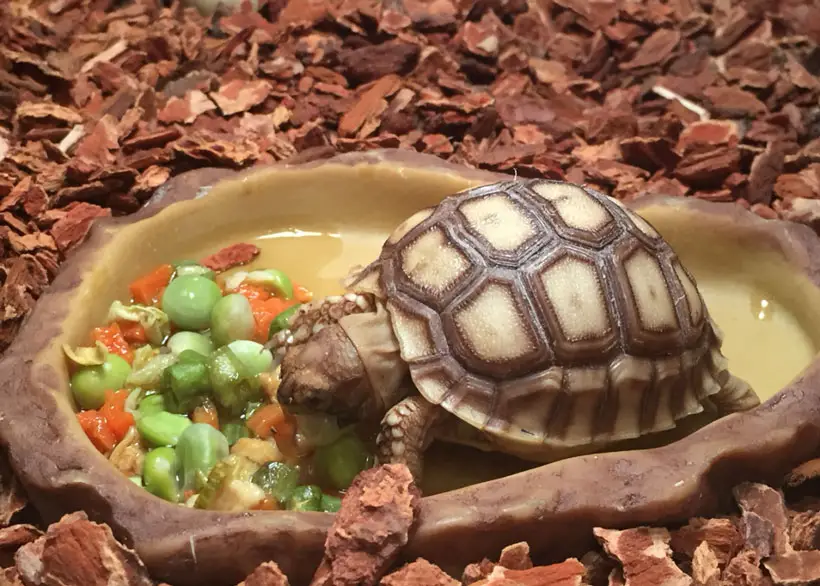
Daily feedings are necessary to support the growth of baby tortoises. Provide a selection of fresh greens and grasses in appropriate serving sizes. Keep an eye on how they are eating and modify the quantity according to it.
Additionally, it is crucial for a baby Sulcata tortoise to follow a balanced diet for proper growth and development. Storing a week’s worth of salad in the refrigerator and distributing them in tiny portions each day would be a good idea.
Hydration And Soaking Needs
The most important parts of taking care of a baby Sulcata tortoise are hydration and soaking. Proper hydration helps regulate a number of internal processes, including digestion, food absorption, and body temperature.
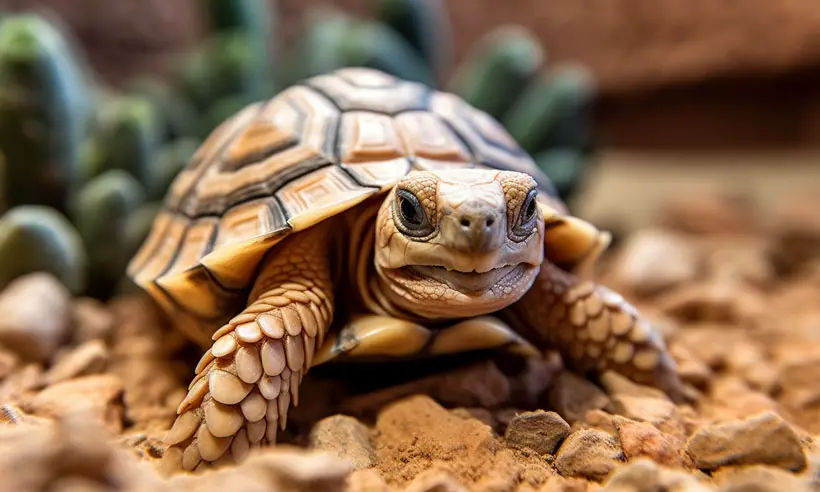
Furthermore, it is important to ensure a shallow dish of fresh water available at all times within the tortoise’s enclosure. The dish needs to be big enough for the tortoise to comfortably drink from and soak in. Don’t forget to regularly clean and refill the water.
For young Sulcata tortoises, soaking offers several benefits. Soaking helps the digestive process, especially in the breakdown of fibrous plant stuff. Moreover, it gives the tortoise a way to control its body temperature as it absorbs heat through its limbs when in water. It also makes it easier for skin to shed.
Offer regular soaking sessions to your baby tortoise, especially during warmer months or in drier environments. Aim for daily soakings that last between 10 to 30 minutes. When soaking, observe your tortoise’s behavior to ensure they are comfortable and not displaying signs of stress.
Health Care and Veterinary Check-ups
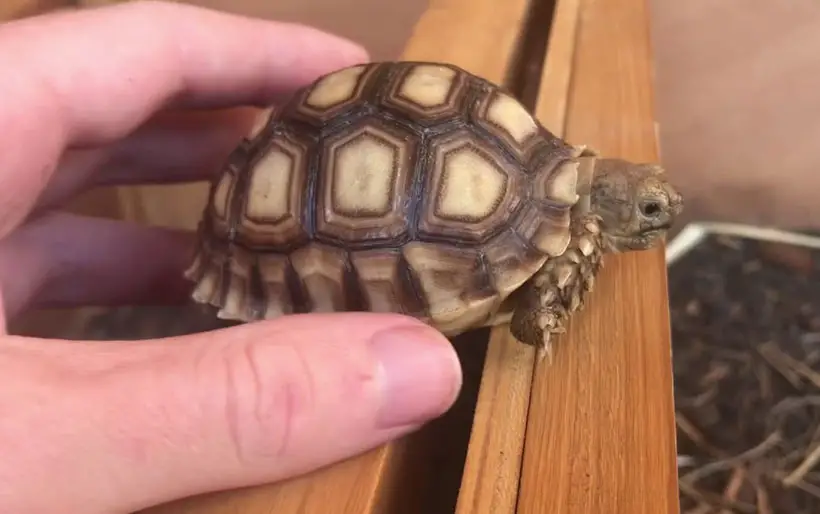
Regular health care is essential for protecting your baby Sulcata tortoise from illness and discovering possible health issues. Regular examinations enable the early identification and swift treatment of any illnesses. It is advised to get them examined by a veterinarian every year.
- Consult with an Experienced Vet: Finding a veterinarian with expertise in reptile care is important, especially for treating tortoises. Veterinarians with experience with reptiles have the knowledge and skills required to provide your baby Sulcata tortoise the proper care and attention.
- Have Regular Fecal Test: It is also essential to have Fecal as a part of routine veterinary care for Sulcata tortoises. These exams involve analyzing a small sample of the tortoise’s feces to check for the presence of internal parasites, such as worms or protozoa. Regular fecal exams help monitor and manage parasite infections.
- Take preventive Measures: In addition to check-ups and fecal exams, your veterinarian may recommend preventive care measures. These include vaccinations against certain diseases, such as upper respiratory infections, and treatments to prevent external parasites like mites or ticks.
FAQ
Below are some frequently asked questions regarding baby Sulcata tortoise care:
A healthy tortoise will have signs of a growth ring which appears as a palish band in between the bony plates (scutes) and above the lower, marginal scutes. Also when holding a tortoise, it should feel solid rather than light. Additionally, the eyes of the tortoise should be clear and bright and there should be no sign of discharge.
No. You cannot feed them bread, cakes, or biscuits. Tortoises are herbivorous, and meat or processed food can cause kidney damage.
Yes, baby Sulacatas do sleep a lot. About 85% of the day, they would be either sleeping or hiding.
Conclusion
In conclusion, taking care of a baby Sulcata tortoise requires attention, knowledge, and dedication. Even though it might be challenging to take care of one, it is not impossible. Following the guidelines presented above will surely help you in taking care of your baby Sulcata tortoise.
By providing a spacious enclosure, maintaining proper temperature, lighting, and humidity levels, you can create a healthy and thriving environment for your tortoise. Moreover make sure to offer a balanced diet, ensuring hydration and soaking needs are met, and seeking regular veterinary check-ups.

